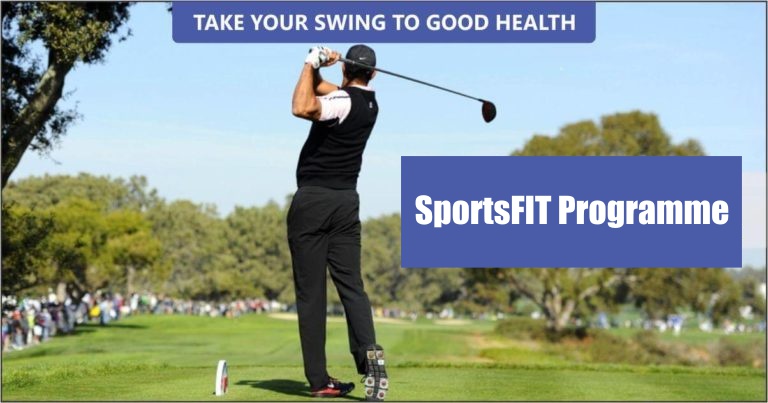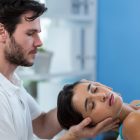It is golf season! Many of us look forward to this time of year for recreation and good times. However, golf injuries such as “golfer’s elbow” can occur and are very painful. Golfers elbow is also known as Medial epicondylitis or pitcher’s elbow. It is a condition that causes pain where the tendons of your forearm muscles attach to the bony bump on the inside of your elbow.
When you use these elbow muscles repeatedly, small tears develop in the tendons. Over time, this leads to irritation which results in inflammation and pain where the tendon is attached to the bone.
Despite the name, this condition doesn’t just affect golfers. Any repetitive hand, wrist, or forearm motions can lead to golfer’s elbow.
The injury can occur from using the poor form or overdoing certain activities, such as:
- Golf
- Baseball and other throwing sports, such as football and javelin
- Racquet sports, such as tennis
- Weight training
- Repeated twisting of the wrist
People in certain jobs may be more likely to develop it, such as:
- Painters
- Carpenters
- Plumbers
- Construction workers
- Cooks
- Assembly-line workers
- Computer users
- And more…
Common Symptoms of golfer’s elbow include:
- Pain and tenderness. Usually felt on the inner side of your elbow, the pain sometimes extends along the inner side of your forearm or wrist. Pain typically worsens with repetitive wrist movements. The pain of golfer’s elbow can come on suddenly or gradually.
- Stiffness. Your elbow may feel stiff and making a fist might hurt.
- Weakness. You may have weakness in your hands and wrists.
- Numbness or tingling. These sensations might radiate into one or more fingers — usually the ring and little fingers.
You can prevent this condition by doing the following:
- Strengthen your forearm muscles. Use light weights or squeeze a tennis ball. Even simple exercises can help your muscles absorb the energy of sudden physical stress.
- Stretch before and after your activity/game. Walk or jog for a few minutes to warm up your muscles. Then do gentle stretches before you begin your game Stretches at the end of the game/activity is also very important as it helps with decreasing soreness after strain full activity. Please talk to your physiotherapist to give you these stretches.
- Correct your form. Whatever your sport, ask an instructor or your physiotherapist to check your form to avoid overload on muscles.
- Use the right equipment. If you’re using older golfing irons, consider upgrading to lighter graphite clubs. If you play tennis, make sure your racket fits you. A racket with a small grip or a heavy head may increase the risk of elbow problems.
- Lift properly. When lifting anything, including free weights, keep your wrist rigid and stable to reduce the force to your elbow.
- Know when to rest. Try not to overuse your elbow. At the first sign of elbow pain, take a break. If you feel minor ache on the inner part of the elbow or forearm or weakening of the grip, if the soreness lasts more than 72 hours then please talk to your health professional before returning to the activity.
- Stay hydrated: Always make sure that you are hydrated during the game.
It is important to rehab this injury by visiting a physiotherapist and following these recommendations:
- Resting or pacing the activity which increases the symptom
- ICE: Apply ice packs to your elbow for 15 to 20 minutes at a time, three to four times a day for several days. To protect your skin, wrap the ice packs in a thin towel. It might help to massage your inner elbow with ice for five minutes at a time, two to three times a day
- Modalities: Your physiotherapist can use modalities like Ultrasound, Laser, IFC, etc. for pain relief and help with inflammation.
- Stretching: Selective stretching will help you to maintain muscle flexibility and to decrease the chance of any future injury
- Strengthening: it is important to strengthen your forearm and wrist muscle so that they can take the the strain you put during activity/game.
- Guarding the part by brace or taping: a counterforce brace on your affected arm, which might reduce tendon and muscle strain
- Posture education and maintenance during game or activity: Keeping proper posture during the activity/game can decrease the chances of injury significantly please talk to your physiotherapist regarding postural.
- Gradual return to the activity: It is very important that you gradually return to activity/game as it gives time to your muscles to meet up with work demand.
Disclaimer
This information should not be used as a substitute for professional diagnosis and treatment as this is for informational purposes only. One must consult their healthcare provider before making any healthcare decisions. Any damage, loss or injury suffered by an individual as a result of reliance on the information contained on this site is neither the responsibility nor the liability of Orthocure Clinics.





